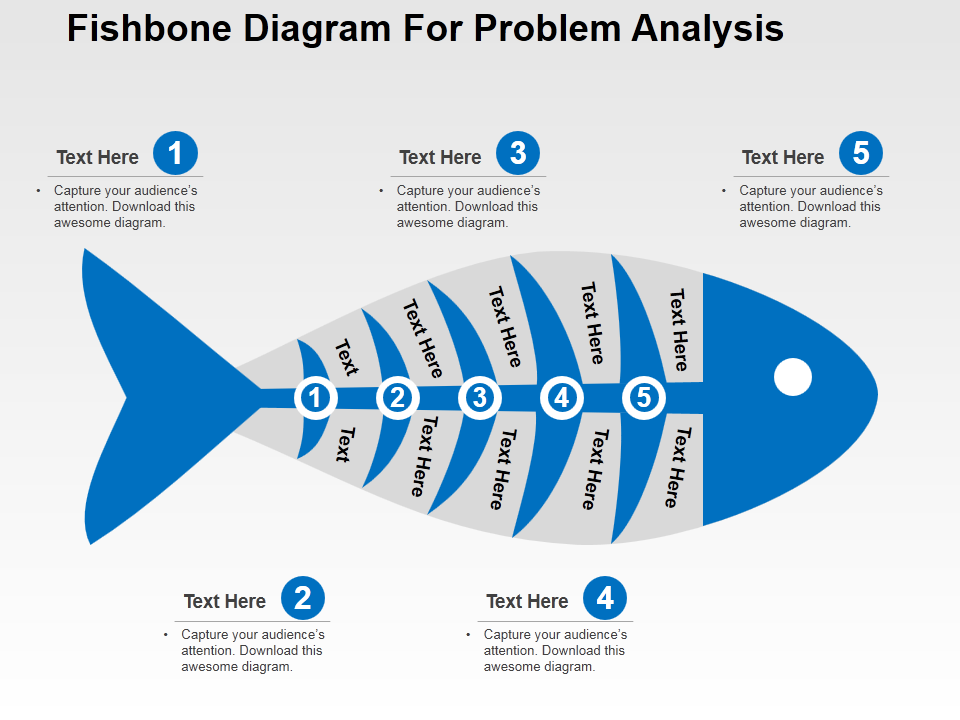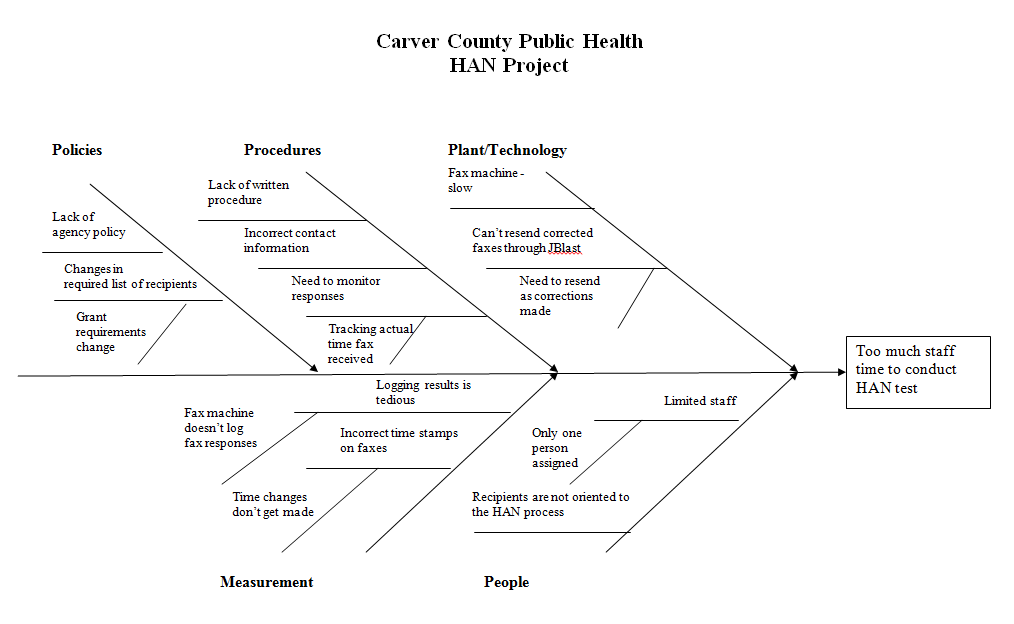
You can easily move the sticky notes to different categories or create new ones as the brainstorming session progresses. This collaborative approach will result in a comprehensive analysis, with points neatly categorized under various headings. Here is a fishbone diagram put together by a motor manufacturing team addressing a high failure rate on an in-house test. Project the template onto a whiteboard and invite participants to add their own causes under different categories using sticky notes. To take this a step further, you can use the PowerPoint Fishbone diagram template in a more interactive way. This helps your audience to better understand and process the information you are presenting. There are two primary reasons why PowerPoint is an excellent tool for creating an Ishikawa diagram.įirstly, a fishbone diagram on a slide is an effective way to explain the causes of an event in an organized and visually appealing manner. They are sometimes referred to as fishbone diagrams because they resemble the skeleton of a fish, with a head, spine, and bones. Now, wishbone.Why Use PowerPoint to Create an Ishikawa Diagram? Run the above through dot and you get this - not that far off, but not a fishbone diagram: Humidity:e - temperature:e - Environment:nĪngle:e -Engager:e- Brake:e- Methods:n from here on, we are drawing edges out from centerline Add or remove a branch, and SmartDraw realigns and arranges all the elements so that everything looks great. ////////////////////////////////////////////////////////////// Make a Fishbone Diagram The Easy Choice for Creating Fishbone and Ishikawa Diagrams Online Easy to Use Click simple commands and SmartDraw builds your fishbone diagram for you. Personnel:s-shifts:e-training:e-operators:e-"another thing":e - p3:c Use of cause and effect diagrams There should be a problem statement that describes the problem accurately. Materials:s-alloys:e-Lubricants:e-Suppliers:e send this edge to the middle of the centerlin point Measurements:se - calibration:e - microscopes:e - inspectors:e group attribte helps keep nodes aligned vertically Once youve chosen a fishbone diagram template to assist you in your root cause analysis, customize it using our intuitive drag-and-drop design editor. Ishikawa diagrams are causal diagrams created by Kaoru Ishikawa that show the potential causes of a. A fishbone diagram is also known as the cause-and-effect diagram, as it helps in finding the root cause of the problem in the business processes of an organization. added a centerline attribute to make adding rak easier Fishbone diagrams are also known as Ishikawa Diagrams. note using standard ranking (top-to-bottom) first, we define the nodes & edges that make the centerline edge non-directed graph, though directed would also work

Fishbone diagram tutorial pdf#
It helps to identify the root causes of an effect in order to identify an appropriate solution that can be effective. As you can see, the fishbone diagram example above allows a viewer to see several factors at once, making it a great diagram for sharing a lot of complex information. Download and share - Save your fishbone diagram as a PNG, JPG, or PDF and add it to your projects. A fishbone diagram is one of the seven basic tools of quality.

If not usable, please explain what you need. The word fishbone comes from its visual representation that looks like the skeleton of a fish.

They were first introduced by Kaoru Ishikawa in 1968, hence they are sometimes. If you find it usable, I'll attach the input file & explain what is going on. A fishbone diagram can be defined as a diagram that shows the possible causes of a specific event or a problem. Below is a "pretty good" (eye of the beholder) version of the example diagram. As noted above, Fishbone Diagrams are outside the norm for Graphviz.


 0 kommentar(er)
0 kommentar(er)
